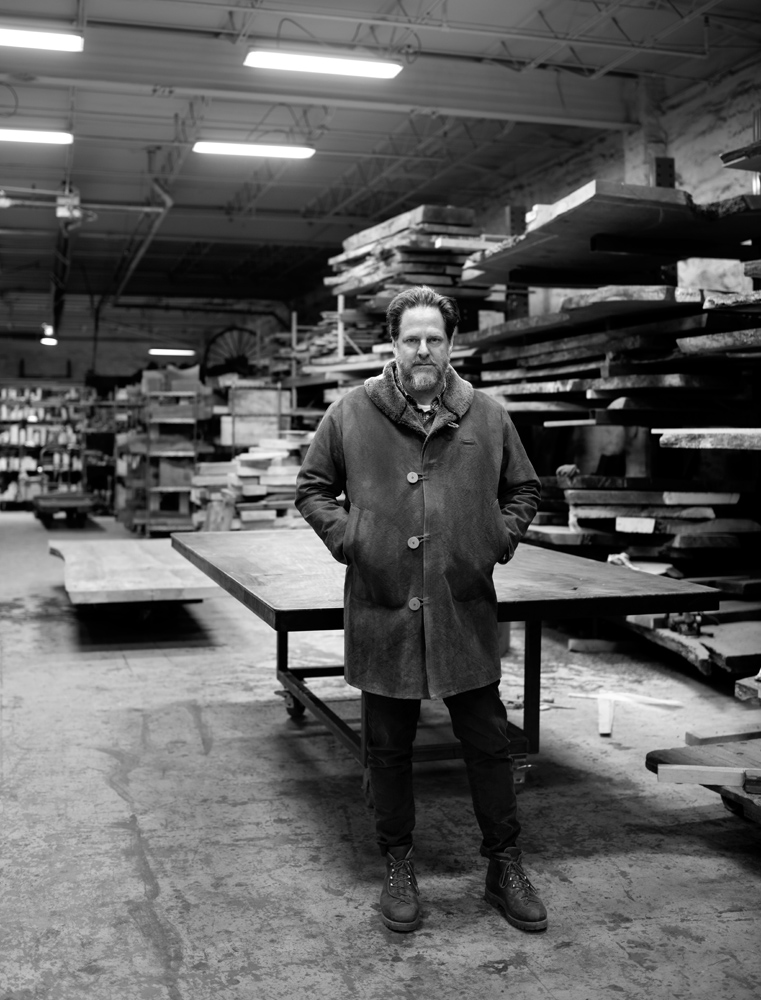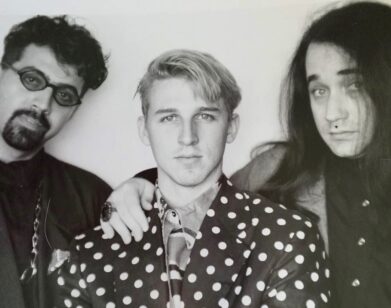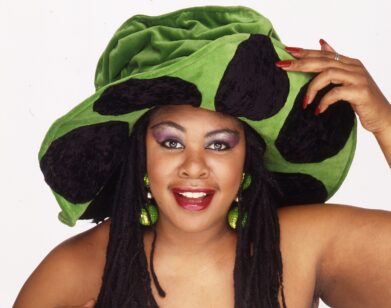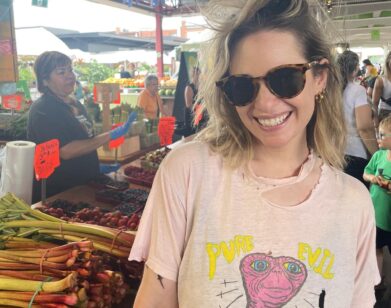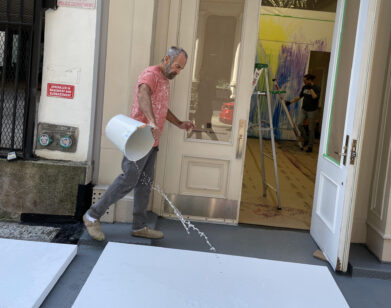Tyler Hays
Most kids fantasize about becoming superheroes or millionaires. Tyler Hays—the multihyphenate designer behind luxury design firm BDDW, which he founded in 1995—dreamed of one day being able to make everything he owned, right down to his socks and shoes. “I would go through the day, and every object I would see I’d be like, ‘Can I make that?’ ” Hays says of his childhood, growing up in a wood-heated cabin in rural Joseph, Oregon.
Today, at 48, Hays has all but achieved his childhood ambition: In addition to the ever-expanding list of products handcrafted in his 300,000-square-foot workshop in Philadelphia—furniture, ceramics, clothing, and one-of-a-kind turntables—he makes as many of his own personal items as possible. “I basically do everything but blow glass,” he says, listing a dizzying array of things he recently made: toys for his three kids, dog crates, a down-fill parka, beer (which he taught himself to brew as a teenager), and even hair wax. The story of how this last item offers a window into what Hays calls his “fetish-level local, DIY” mind-set: Every ingredient in the “hair goo” is wildly foraged by Hays himself, then malted and extracted using an essential oil extractor that he built from scratch. When he realized he needed beeswax, he began raising bees, and then harvested the stuff himself. It’s all mixed in his own kitchen, then poured into ceramics made from clay dug by Hays, and glazed with ashes from his wood-burning stove.
Unsurprisingly, Hays applies that same near-manic attention to detail to everything he makes in his workshop: “We make our own thread, our own buttons, the springs in our upholstery are all hand-tied,” he says. “We even built some of the machines we work on.” That methodical approach may not be immediately evident in the sleekly naturalist wood-slab dining tables and sumptuous tufted sofas at his SoHo store—and the pieces are most certainly the more powerful for it. “I’m interested in the completeness of how far you can go with the process, figuring out the next level of authenticity,” says Hays. “It’s not a performance-art project. But almost.”

